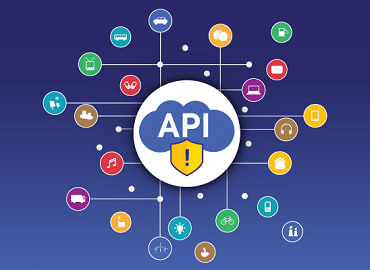API Security: A Comprehensive Guide
By Alex Alvarado
In today’s digital landscape, Application Programming Interfaces (APIs) play a pivotal role in connecting and enabling various software systems to interact with one another. They have become the backbone of modern software development, powering everything from mobile apps to cloud services. However, the growing importance of APIs has also made them a prime target for malicious actors. To safeguard your digital assets and maintain the trust of your users, it’s essential to master API security. In this comprehensive guide, we’ll explore the key aspects of API security and provide actionable steps to enhance it.
1. Understanding the Significance of API Security
APIs are like bridges that allow data and functionality to flow between different applications, both internally and externally. Securing these bridges is crucial for several reasons:
- Data Protection: APIs often transmit sensitive data. A breach can result in the exposure of private information, financial data, or intellectual property.
- Reputation Management: A security incident can tarnish your organization’s reputation, eroding trust among customers, partners, and stakeholders.
- Compliance: Many industries are subject to strict data protection regulations. Failing to secure APIs can lead to legal consequences and hefty fines.
2. The Anatomy of API Security
API security involves multiple layers and components:
- Authentication: Properly verifying the identity of the parties involved is the first line of defense. Techniques like API keys, OAuth, and JWTs (JSON Web Tokens) are commonly used for this purpose.
- Authorization: After authentication, you must determine what actions and data each user or system is allowed to access. Role-based access control (RBAC) and OAuth scopes help enforce this.
- Data Encryption: Use HTTPS to encrypt data in transit and consider data encryption at rest for stored data.
- Input Validation: Protect your API from common attacks like SQL injection and cross-site scripting (XSS) by validating and sanitizing input.
- Rate Limiting: Implement rate limiting to prevent abuse or overuse of your API, which can lead to resource exhaustion and service disruption.
- Logging and Monitoring: Keep detailed logs and monitor API traffic for unusual patterns or security incidents. Tools like SIEM (Security Information and Event Management) systems are invaluable for this purpose.
3. API Authentication Best Practices
Authentication is the cornerstone of API security. Here are some best practices:
- API Keys: Use API keys to authenticate clients accessing your API. Ensure they are stored securely and rotated periodically.
- OAuth: Implement OAuth for secure and standardized user authentication and authorization. OAuth 2.0 is widely adopted and provides various grant types for different use cases.
- JWT (JSON Web Tokens): If your API issues tokens for authentication, use JWTs. These tokens are compact, self-contained, and can carry user claims securely.
4. Authorization and Access Control
Once a user is authenticated, you need to control what they can do within your API:
- Role-Based Access Control (RBAC): Assign roles to users or systems and define permissions based on those roles. Regularly review and update permissions.
- OAuth Scopes: Use OAuth scopes to fine-tune access control within your API. Limit access to specific resources or actions based on the user’s consent and the client’s scope.
5. Data Encryption
- Transport Layer Security (TLS): Always use HTTPS to encrypt data in transit. TLS ensures that data exchanged between the client and your API is secure and cannot be intercepted.
- Data at Rest: Consider encrypting sensitive data stored on your servers. Use industry-standard encryption algorithms and key management practices.
6. Input Validation
- Sanitize User Input: Never trust user input. Sanitize and validate input data to prevent common attacks like SQL injection and XSS.
- Use API Gateways: Implement API gateways that can filter and sanitize incoming requests before they reach your API endpoints.
7. Rate Limiting
- Implement Rate Limits: Define rate limits for your API endpoints to prevent abuse or denial-of-service attacks. Consider different rate limits for different types of clients or users.
8. Logging and Monitoring
- Comprehensive Logging: Keep detailed logs of API activity, including authentication and authorization events.Retain logs for an appropriate period to aid in investigations.
- Real-Time Monitoring: Implement real-time monitoring and alerting to detect and respond to security incidents promptly.
Here is a discount code for the best Udemy course I could find on API Security. It also includes a whole section of lectures on how to sell an API that you will build.
Conclusion
API security is not a one-time effort but an ongoing process that requires vigilance and adaptation to evolving threats. By understanding the critical components of API security and following best practices, you can protect your digital assets, preserve your organization’s reputation, and ensure compliance with regulations. Keep in mind that security is a shared responsibility, and every stakeholder in your organization should be educated and aware of their role in maintaining API security. With the right strategies and tools in place, you can confidently navigate the world of API-driven applications while keeping your data and systems secure.

